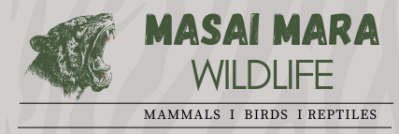- Common Name: Aardwolf
- Scientific Name: Proteles cristata
- Swahili Name: Fisi ya nkole
- Maasai Name: I-wuarwuarsam
- Size:
- Head-Body Length (HBT): 110 cm (43 inches)
- Shoulder Height (SH): 45 cm (18 inches)
- Gestation: 14 weeks
- Recognition: The Aardwolf resembles the striped hyena but is much smaller, more slender, and has less fur. With pointed, pink ears, slender legs, and a jackal-like build, this unique creature stands out from its larger hyena cousins. Its five-toed front feet are another distinguishing feature.
Habits and Behavior
- Nocturnal and Solitary: Aardwolves are predominantly nocturnal and are often seen foraging alone. However, they can also display social behavior, particularly among family units. Despite their solitary hunting nature, they typically live in loose colonies and maintain monogamous pairs, with both parents contributing to raising their young.
- Diet and Feeding: Aardwolves are specialized feeders, consuming almost exclusively harvester termites, sometimes up to 200,000 termites per night. This termite-eating behavior makes them unique among the hyena family. Their long, sticky tongue allows them to extract termites from mounds efficiently, similar to the feeding methods of pangolins and aardvarks. Unlike other hyenas, aardwolves lack the bone-crushing molars and powerful jaws, as their diet does not require these adaptations.
Habitat
- Where to Find: Aardwolves prefer dry acacia scrublands but are occasionally found on grassy savannas where termite mounds are abundant. In the Masai Mara, they are more frequently found in dry, open areas where their favorite prey—termites—are plentiful. They live in dens, often moving every few months to new feeding grounds, allowing termite populations to regenerate.
Conservation Status
- IUCN Status: Least Concern. The Aardwolf population remains stable across much of its range, primarily due to its specialized diet and relative isolation from human conflict. However, threats like habitat loss and the use of pesticides, which reduce termite populations, can pose localized risks.
Key Threats
- Habitat Loss: Expansion of agriculture and human settlements leads to the destruction of their natural habitat, reducing termite populations and the availability of safe dens.
- Pesticide Use: Since aardwolves depend almost entirely on termites, the use of insecticides and pesticides in agricultural areas can have devastating effects on their food supply.
- Human Conflict: Although they are less prone to direct human conflict than larger predators, aardwolves are sometimes mistakenly targeted by farmers who confuse them with livestock predators like hyenas.
Conservation Measures
- Preservation of Habitat: Ensuring that dry acacia scrublands and savanna habitats remain intact is crucial for the survival of aardwolves. Protected areas like the Masai Mara provide a refuge where these specialized feeders can thrive.
- Pesticide Regulation: Reducing or controlling the use of pesticides near protected areas helps maintain healthy termite populations, which are vital to the aardwolf’s survival.
- Education and Awareness: Raising awareness among local communities about the harmless nature of aardwolves can prevent unnecessary killings due to mistaken identity with other predators like hyenas.
Unique Characteristics
- Specialized Diet: The aardwolf’s almost exclusive reliance on termites sets it apart from its hyena relatives. Its molars are adapted for grinding insects rather than crushing bones, and its diet has shaped its unique role in the ecosystem.
- Scent Marking: Aardwolves use their anal glands to mark territory, laying pungent scent trails. Their faeces have a strong ammonia-like odor, a result of their termite-heavy diet.
- Monogamous Pairs: Aardwolves typically form monogamous pairs, sharing the responsibility of raising their offspring, a relatively rare trait among solitary foragers.
In conclusion, the aardwolf is a fascinating and specialized species within the hyena family, distinguished by its termite-focused diet and nocturnal habits. While it faces threats from habitat destruction and pesticide use, its conservation status remains stable thanks to its niche feeding habits and presence in protected areas like the Masai Mara. Conservation efforts focused on habitat protection and awareness can help ensure that aardwolves continue to thrive in their natural environment.
